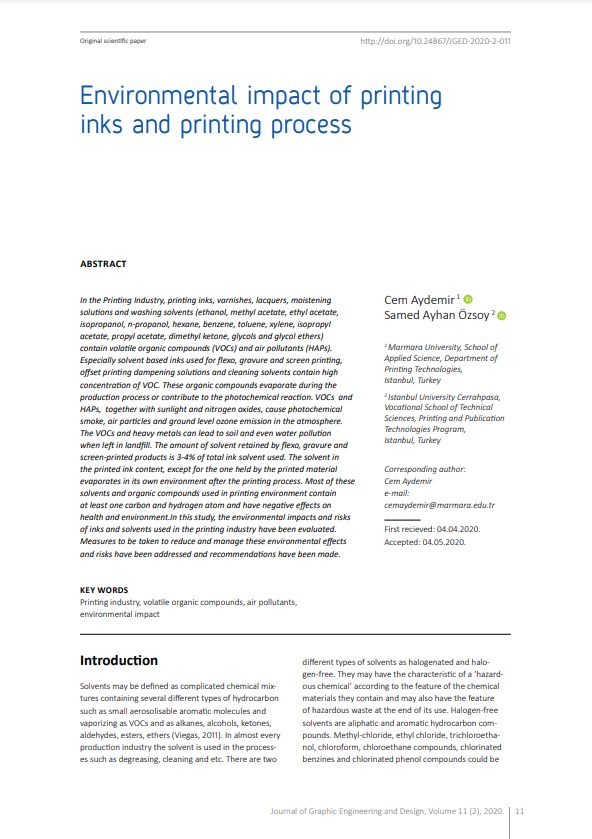
Published 2020-12-01
abstract views: 5764 // Full text article (PDF): 4047
Keywords
- Printing industry,
- volatile organic compounds,
- air pollutants,
- environmental impact
How to Cite
Copyright (c) 2020 © 2020 Authors. Published by the University of Novi Sad, Faculty of Technical Sciences, Department of Graphic Engineering and Design. This article is an open access article distributed under the terms and conditions of the Creative Commons Attribution license 3.0 Serbia.

This work is licensed under a Creative Commons Attribution 3.0 Unported License.
Abstract
-
In the Printing Industry, printing inks, varnishes, lacquers, moistening solutions and washing solvents (ethanol, methyl acetate, ethyl acetate, isopropanol, n-propanol, hexane, benzene, toluene, xylene, isopropyl acetate, propyl acetate, dimethyl ketone, glycols and glycol ethers) contain volatile organic compounds (VOCs) and air pollutants (HAPs). Especially solvent based inks used for flexo, gravure and screen printing, offset printing dampening solutions and cleaning solvents contain high concentration of VOC. These organic compounds evaporate during the production process or contribute to the photochemical reaction. VOCs and HAPs, together with sunlight and nitrogen oxides, cause photochemical smoke, air particles and ground level ozone emission in the atmosphere. The VOCs and heavy metals can lead to soil and even water pollution when left in landfill. The amount of solvent retained by flexo, gravure and screen-printed products is 3-4% of total ink solvent used. The solvent in the printed ink content, except for the one held by the printed material evaporates in its own environment after the printing process. Most of these solvents and organic compounds used in printing environment contain at least one carbon and hydrogen atom and have negative effects on health and environment.In this study, the environmental impacts and risks of inks and solvents used in the printing industry have been evaluated. Measures to be taken to reduce and manage these environmental effects and risks have been addressed and recommendations have been made.


